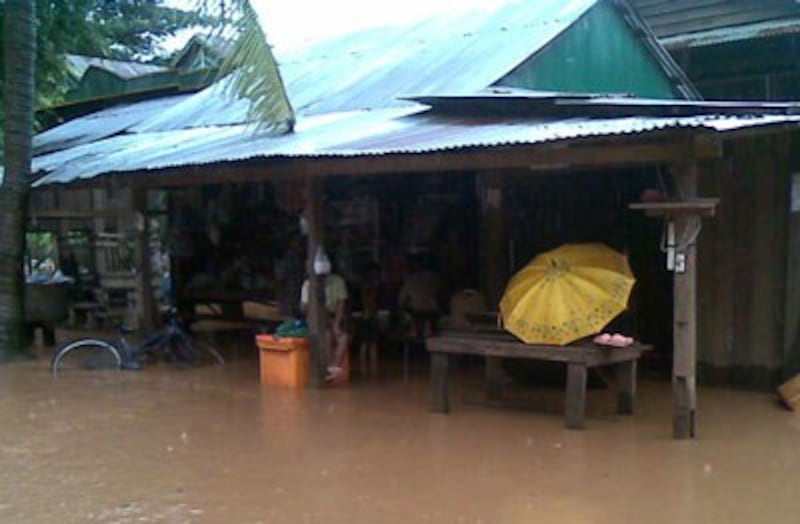Extreme drought and flooding are wreaking havoc in Cambodia, with 45 people killed and tens of thousands made homeless by rising waters, and large tracts of farmland threatened by a prolonged dry spell, officials said.
Heavy rains have caused severe flooding along Cambodia’s Mekong and Basak rivers in nearly the entire eastern part of the country, destroying rice fields and wrecking homes and other structures, according to government sources.
Meanwhile, drought in the northern and southern parts of the impoverished country also threatens harvests as farmers struggle to find water to irrigate their crops, the sources said.
The flooding, which began in July and has continued through August, has affected 12 provinces and led to 45 deaths, one government official told RFA’s Khmer Service this week.
“It has now been confirmed that 45 people have been killed,” said Vice Chairman for Cambodia’s National Committee for Disaster Management Nhim Vanda.
The southern province of Prey Veng has seen the largest number of deaths, with neighboring Kampong Cham coming in second, Vanda said, adding that two of the 45 who died were killed by snakebite.
Other affected provinces include Preah Vihear, Kampong Thom, Ratanakiri, Strung Treng, Kratie, Tbong Khmum, Kandal, Svay Rieng, Kampot, and Mondulkiri, Vanda said.

Reports show that the flooding over the last two months has affected about 100,000 families and 60,000 houses and flooded about 80,000 rice fields, with an estimated 9,000 hectares (22,240 acres) of rice and 10,000 hectares (24,710 acres) of plantations destroyed, Vanda said.
Additionally, 396 schools, 154 pagodas, and 32 hospitals have been flooded, he said.
Vanda declined to give a figure for estimated financial losses from the flooding, but voiced concern over possible damage resulting from further storms and rain.
“It is very hard now to take care of our children, and even of our livestock,” a villager in southern Cambodia’s Prey Veng province said, describing the hardships caused by the floods.
“The flooding has lasted for almost three months now, and I am scared my children may drown,” the villager, Phan Vai, told RFA.
Cambodian Red Cross senior official Uy Samath said that the Red Cross has so far helped about 13,000 families affected by the floods, providing emergency aid including rice, instant noodles, canned fish, and temporary shelters.
“I think we have more people to help—especially those living along the Mekong river and in Preah Vihear and Kampong Thom and along the Tonle Sap,” he said.

'Twin problems'
Meanwhile, drought in other parts of Cambodia—including the provinces of Oddar Meanchey in the north and Takeo in the south—has also threatened crops, with rice-growing areas left without adequate water, sources said.
Oddar Meanchey agriculture official Kam Vuthythun said that about 5,000 hectares (12,355 acres) of rice are now at risk in the northern province, adding, “If there is rain, we might be able to save the rice. Without rain, it will be destroyed.”
Water sources have also been hard to find in recent days in the province of Kompong Speu and in parts of Takeo and the province of Kampot, Cambodian prime minister Hun Sen was quoted saying by The Cambodia Daily last week.
"Our citizens face twin problems—one is from floods and one is from droughts," Hun Sen said.
Reported by RFA's Khmer Service. Translated by Samean Yun. Written in English by Richard Finney.
